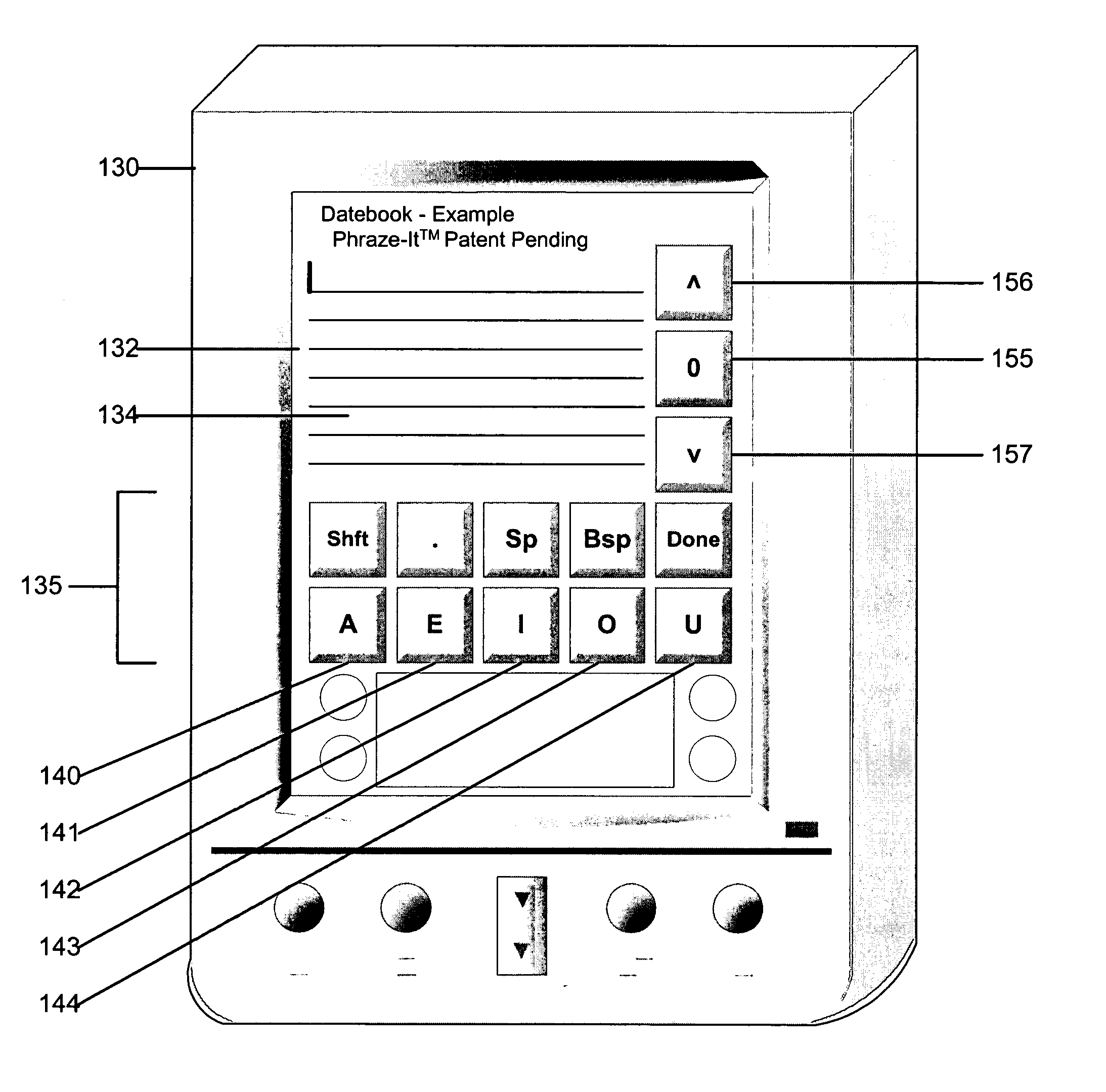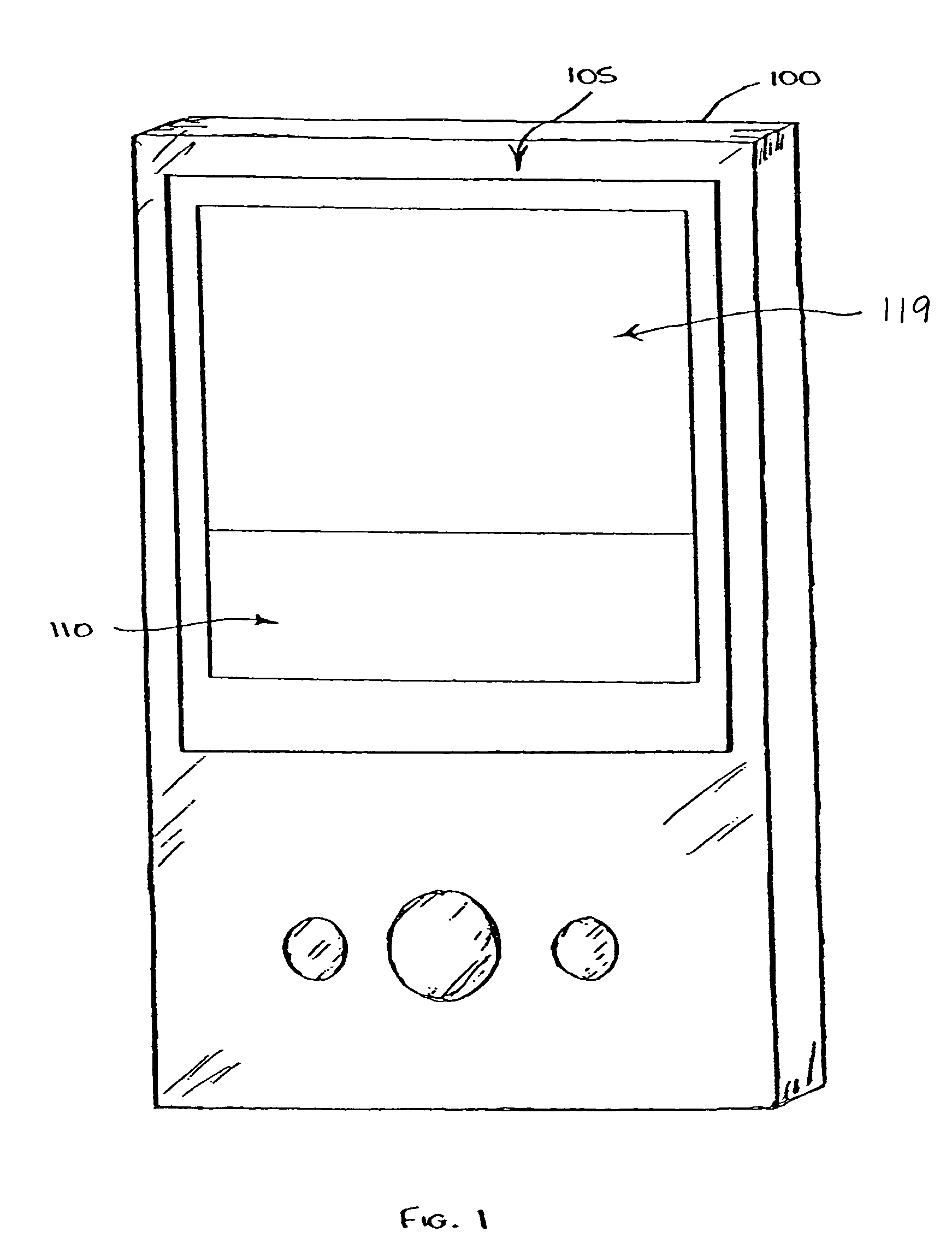System and method for data input
a data input and data technology, applied in the field of systems and methods for data input, can solve the problems of inability or difficulty in using a regular pda interface, and none of the traditional methods satisfactorily address the need for accurate, quick entry of text or other types of data or information into small portable handheld electronic devices, etc., and achieve the effect of easy integration and learning
- Summary
- Abstract
- Description
- Claims
- Application Information
AI Technical Summary
Benefits of technology
Problems solved by technology
Method used
Image
Examples
embodiment 240
[0084]FIG. 14 illustrates an alternate embodiment 240 of the invention, in which the control keys 245 comprise an input mechanism that includes six keys 250–255 arranged horizontally across the device, in this instance in two rows of control keys (including keys 260–262). Again, it will be evident that a single set of control keys can be used, arranged in one line along the device, or that multiple sets of control keys can be used in different layouts and positions, depending on the particular needs of the application.
[0085]FIG. 15 illustrates how the user may select one of the control keys to enter data into the device. In the embodiment shown in FIG. 15, the character selection mechanism is distributed horizontally along the bottom of the display area. A set of control buttons 270 are displayed within the key selection mechanism, representing an initial set of control keys. In this instance the five vowels “A”, “E”, “I”, “O”, “U”, and an additional “.” key are distributed along a ...
embodiment 700
[0123]FIGS. 27A and 27B illustrate an alternate embodiment 700 and screen 702 of the control keys having miniature displays 726, 728, 730, 732, 734 thereon, in which the device incorporates a number of regular hard control keys 704, 706, 708, 710, 712 (i.e. without any miniature display), and an additional set of control keys 714, 716, 718, 720, 722 having miniature displays 726, 728, 730, 732, 734, to provide a mechanism by which the user uses a combination of hard control keys and miniature display control keys to enter data. As shown in FIG. 27A, for example, the letters “A”, “E”, “I”, “O” and “U” are represented as regular hard control buttons 704, 706, 708, 710, 712, while a series of additional control buttons 714, 716, 718, 720, 722 with displays 726, 728, 730, 732, 734 thereon are also presented to the user. In normal use, the user may choose to operate the hard control buttons with their left hand, while their right hand operates the control buttons having miniature display...
PUM
 Login to View More
Login to View More Abstract
Description
Claims
Application Information
 Login to View More
Login to View More - R&D
- Intellectual Property
- Life Sciences
- Materials
- Tech Scout
- Unparalleled Data Quality
- Higher Quality Content
- 60% Fewer Hallucinations
Browse by: Latest US Patents, China's latest patents, Technical Efficacy Thesaurus, Application Domain, Technology Topic, Popular Technical Reports.
© 2025 PatSnap. All rights reserved.Legal|Privacy policy|Modern Slavery Act Transparency Statement|Sitemap|About US| Contact US: help@patsnap.com



